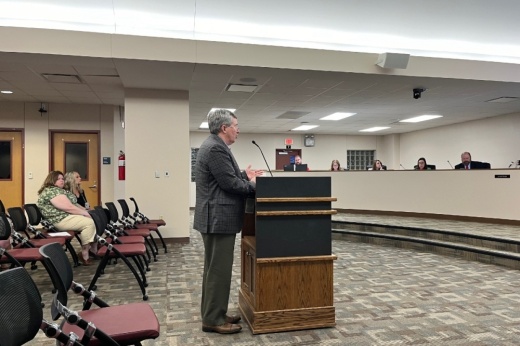The details
Bob Templeton, vice president of Zonda Education’s school district segment, provided the NISD board of trustees with a demographics report based on the fourth quarter of 2023.
In his report, Templeton started off with the overall economic conditions in the Dallas-Fort Worth area that continue to attract individuals and families from other parts of the country.
“Unemployment rates continue to be very low. We’re in that 3.5% range, which is basically fully employed,” Templeton said. “We’re really fortunate that we’re continuing to see job growth in the DFW region as the No. 1 [location] in the country for new home construction, with over 42,000 annual starts in 2023.”
Templeton said the total population in NISD was 165,952 at the end of 2023, and it was just over 130,000 in 2020. Templeton also mentioned the average household size is three, whereas in other districts where he’s run demographics, the household size is under three.
“You’re definitely a district that has school-aged kids,” Templeton said. “The population by generation, the largest is millennial, which is those young parents with really young kids. Overall, you’re a young district, and you’re definitely going to see lots of growth ahead.”
Templeton also discussed the district’s capture rate, which is the percentage of school-aged children in the district who attend NISD schools rather than attending private schools, charter schools or are homeschooled. He said in 2020, the district’s capture rate was 76.5%. Today, it stands at 78.5%
“You have one of the higher capture rates of the districts that we’re tracking in the DFW region,” Templeton said.
On housing, Templeton said NISD continues to be No. 1 in the DFW metroplex based on annual closings, with more than 3,000 closings in 2023.
“The developers are not slowing down at all,” Templeton said. “I think again we’re going to be looking at easily 3,000 homes in 2024.”
Templeton added that out of the 23 elementary school zones in the district, three are building more than 400 homes per year, and six are building more than 200 homes per year. When it comes to future growth in elementary attendance zones, Templeton said that there are 60 actively building subdivisions and 40 future subdivisions. Ground work is underway on more than 5,000 lots in 13 separate subdivisions.
“So you can see a tremendous amount of activity in over six different elementary zones and development activity that isn't slowing down,” he said.
One area where Templeton said could see a pullback is multifamily housing development. He attributed this possible decline to the fact that multifamily housing has been overbuilt across the country.
What’s next
Templeton said in fall 2023, the district grew by roughly 1,500 students, and he is projecting the district will add another 1,100 students next fall. He said their economists believe there could be a softening of interest rates at the end of 2024. By the start of 2025, they could be in the 5% range, which he said is the threshold where many people feel most comfortable about buying a new home. That could push even more people into the district, which Templeton said could be a school capacity issue.
“You’re continuing to see about an elementary school's worth of growth each year,” Templeton said. “We do expect in five years, enrollment will eclipse 37,000, and in 10 years, your enrollment will eclipse 44,350.”





